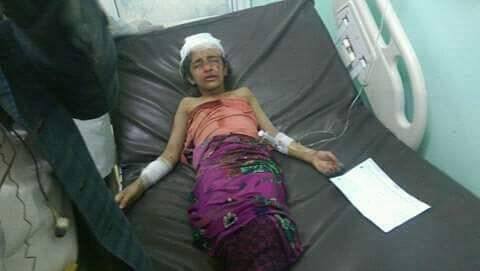The Blockade Killing the Yemeni Children
March 20 / Yemeni press
Save the Children’s spokes person explained that “This crisis is happening because food and supplies can’t get into the country. Yemen was completely dependent on imports of food, medicine and fuel prior to this crisis”.
He criticised both sides, saying the Saudi coalition should let aid in through the ports, and the Houthis “need to ensure that aid can get to hard-to-reach areas”.
This is a false parity. The blockade is responsible for the famine, and there is no mystery who bears responsibility for the blockade.
Before the war, 90 percent of food in Yemen was imported. 80 percent of it came through the port at Hodeida. Jamie Stern-Weiner helpfully documents the story of Hodeida.
In August 2015, Saudi Arabia announced it was blockading the port. They then bombed the bridge connecting Hodeida to Sanaa, Yemen’s capital, on four separate days that month.
About 90 percent of food aid travelled across that bridge.
The port has reportedly been bombed nine more times since then. For example, it was destroyed again by the Saudi led coalition in August last year. Oxfam complained that “This road is the main supply route for Sanaa as it conveys 90% of World Food Program food coming from Hodeidah to the capital. Its destruction threatens to leave many more people unable to feed themselves, worsening an already catastrophic situation in the country.”
That is, the famine in Yemen is not the result of some strange confluence of factors, or an act of god. It is a conscious war policy adopted by the Saudi-led coalition. Yemen academic specialist Sheila Carapico observed that “for more than a year the objective seems to be to starve Yemen into submission. The naval blockade, supplemented by bombing of hospitals, ports, bridges, and other infrastructure, has prevented imports of essential foods, fuels, and medicines and stunted delivery of basic social services like electricity and water”.

